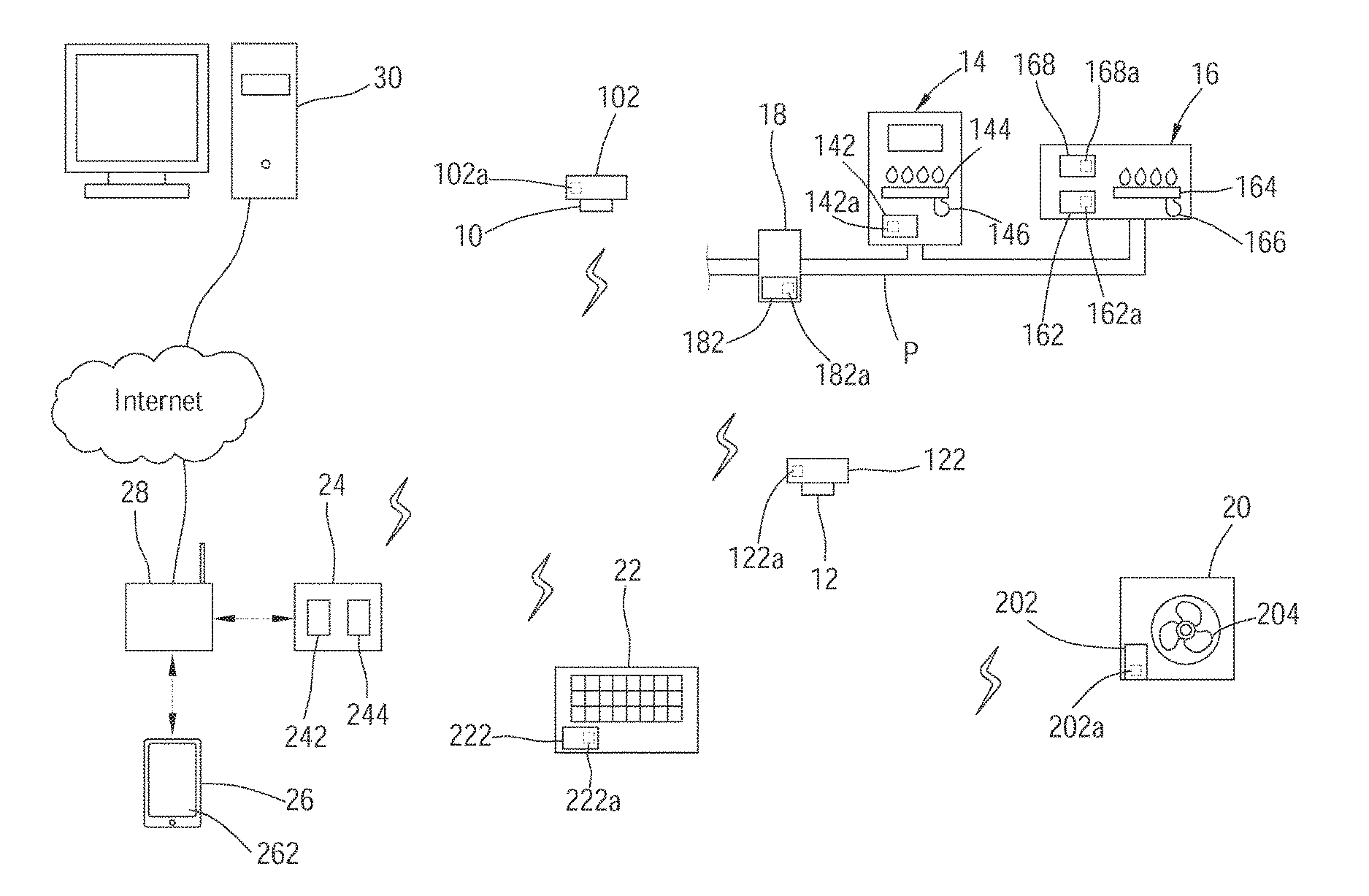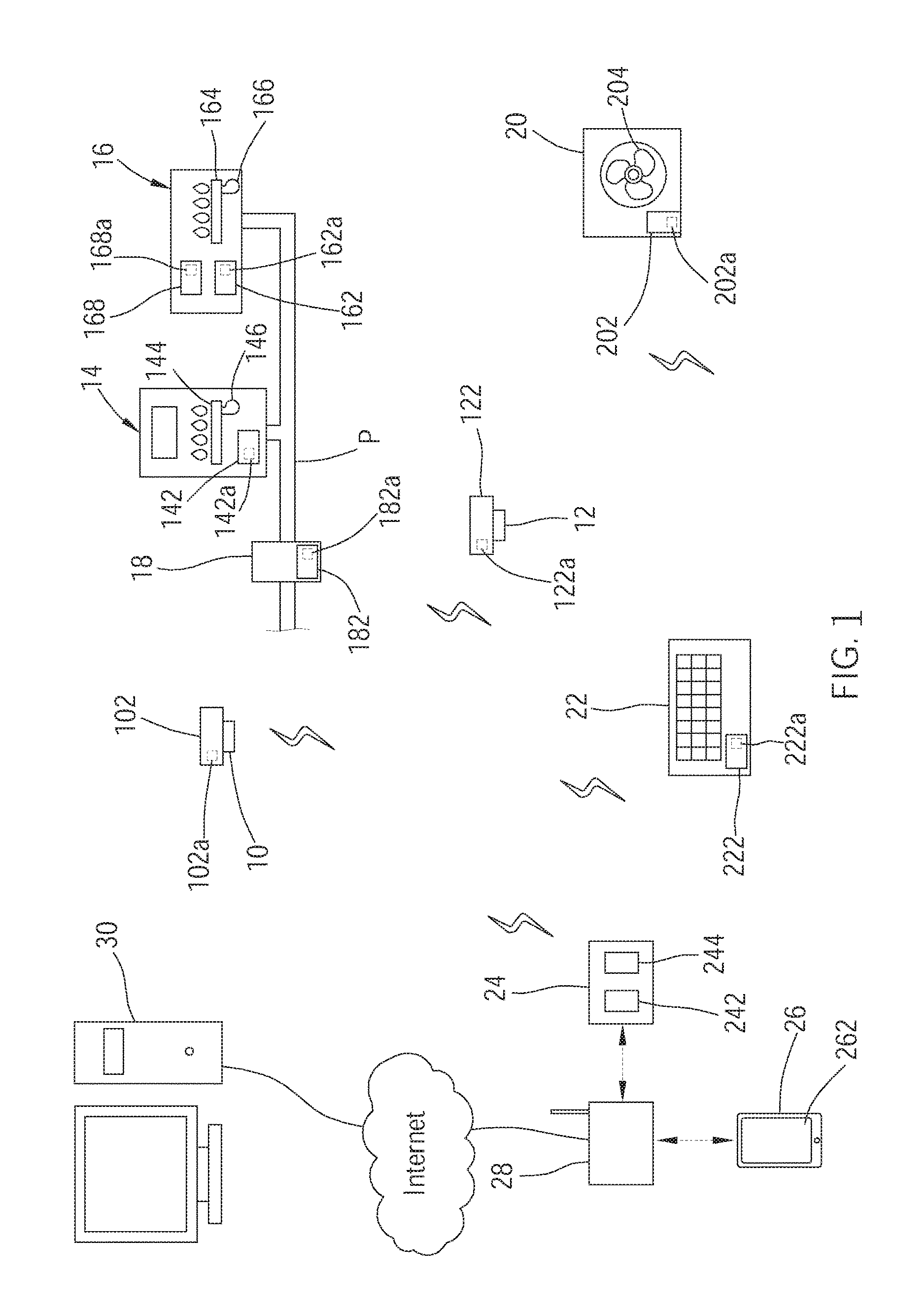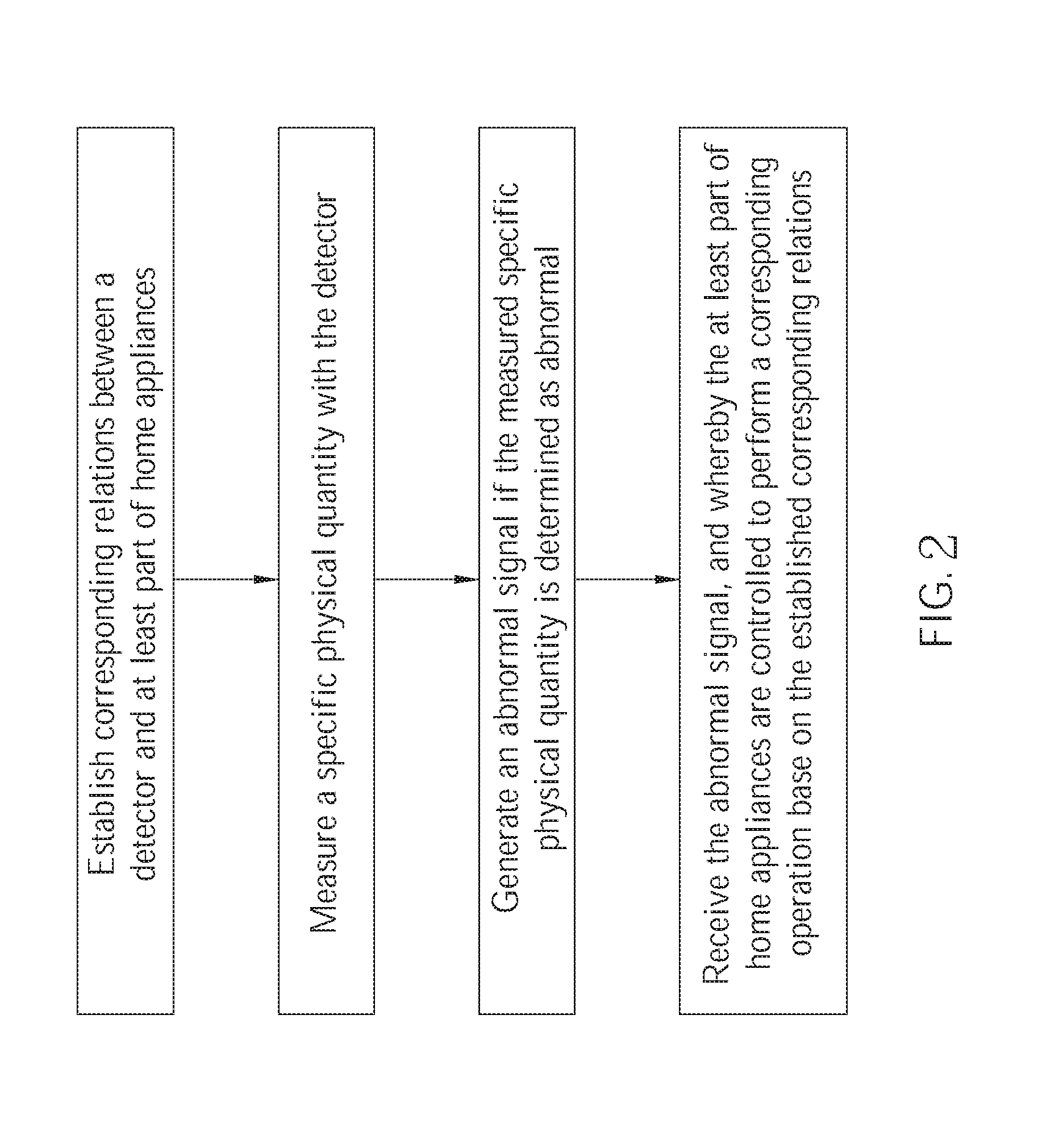Method of controlling a remote controlled system
- Summary
- Abstract
- Description
- Claims
- Application Information
AI Technical Summary
Benefits of technology
Problems solved by technology
Method used
Image
Examples
second embodiment
[0047]Practically, the interactive link information transmitted from the server 30 can be stored in the memory 242 of the relay apparatus 24. Afterwards, if the specific physical quantity measured by the carbon monoxide detector 10 reaches the abnormal value, the relay apparatus 24 transmits the abnormal signal to the relevant home appliances base on the stored interactive link information, whereby the relevant home appliances are controlled to perform the corresponding operation. In another embodiment, the interactive link information is stored in a tablet computer 40, and the tablet computer 40 performs what the server 30 performs in the steps of the
[0048]The detector in the second preferred embodiment could be a smoke detector 12, or one of the detectors installed in the home appliances at the near end, e.g., the oxygen concentration detector 168a of the fireplace 16. If the control device 162 of the fireplace 16 determines that the oxygen concentration measured by the oxygen con...
third embodiment
[0053]In another embodiment, the interactive link information is stored in the tablet computer 40, and the tablet computer 40 performs what the server 30 performs in the steps of the
PUM
 Login to View More
Login to View More Abstract
Description
Claims
Application Information
 Login to View More
Login to View More - R&D
- Intellectual Property
- Life Sciences
- Materials
- Tech Scout
- Unparalleled Data Quality
- Higher Quality Content
- 60% Fewer Hallucinations
Browse by: Latest US Patents, China's latest patents, Technical Efficacy Thesaurus, Application Domain, Technology Topic, Popular Technical Reports.
© 2025 PatSnap. All rights reserved.Legal|Privacy policy|Modern Slavery Act Transparency Statement|Sitemap|About US| Contact US: help@patsnap.com



